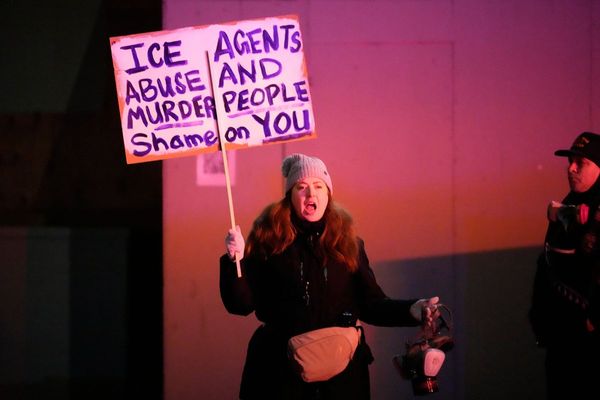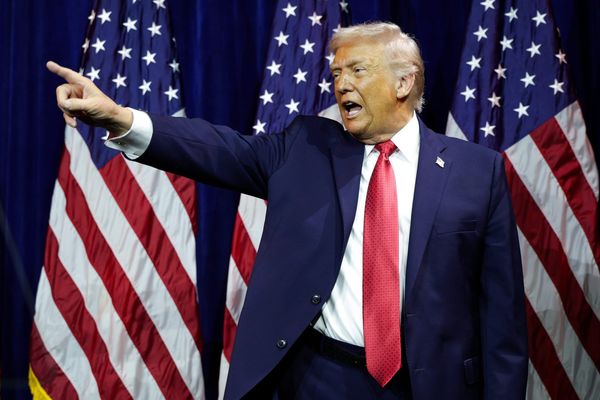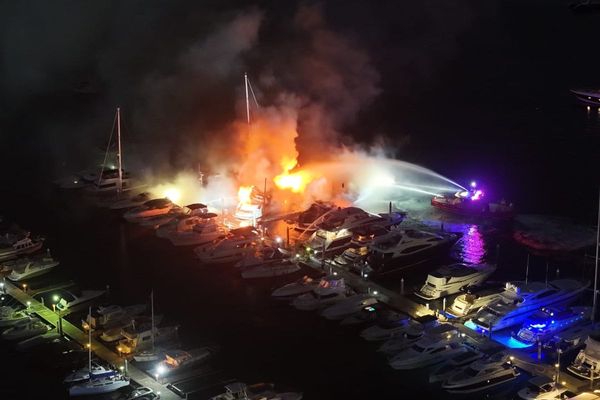Matt Anderson is a man who likes to inhabit the space around him.
On any given weekday at the Australian War Memorial, he might be strolling through the galleries, pausing to consider an object he hadn't properly noticed before.
He might approach a visitor - the memorial is always full of them these days, despite its closed appearance - and ask them about their journey to the memorial on this day.
He'll greet a volunteer guide - always by name - or toss a quip into a tour in progress as he strides by, leaving the tour guide to explain to visitors Anderson is, in fact, the memorial's director.
If it's the third Thursday of the month, you'll likely find him on his rostered cleaning shift in the World War I galleries, opening up cabinets, inspecting for dust or deterioration, cleaning the panes, adjusting the contents.

Or, just as likely, he'll be standing in his bright corner office - now filled with his own memorabilia from his previous careers in the military and in foreign service - gazing out at his empire, the one he took on in 2020 as the pandemic descended and contractors geared up to begin work on an epic and audacious extension to the heritage building.
Even though he was used to crisis management - he was High Commissioner to Samoa when it was struck by a tsunami in 2009, and also ran the MH17 taskforce when the flight was downed in 2014 - it wasn't the most auspicious start to Anderson's most important job to date.
The dream job
The career diplomat, who most recently served as deputy high commissioner in London under George Brandis, had at first been shocked to be invited to apply for the role that was soon to be vacated by the formidable Brendan Nelson.
Until then, he had planned to finish that posting, after which he would most likely be returning to Australia to run the Department of Foreign Affairs crisis management division.
But the more he thought about it, the more it made sense.
When his application was successful, it felt like a harking back to the family holidays of his childhood, which always involved a trip to the memorial, a tour of Duntroon, and a drive through Yarralumla to look at the embassies and guess the flags.

He sees those trips as something of a portent for the direction his life would take - 10 years in the army, and a career in the foreign service.
He also has vivid memories of being a Duntroon cadet on Anzac Day, 1988, when the governor-general lit the eternal flame.
But he never, ever imagined he would one day head up the memorial itself.
"I've always held this organisation, this institution, in such high regard that, you know, I didn't ever think that this was in my orbit," he says.
It wasn't even his idea in the first place - it was Dr Nelson's. The pair had met in London, where Anderson was also, by default, Australia's representative on the board of trustees at the Imperial War Museums, and the Commonwealth War Graves Commission.
"I was always Australia's alternate to those meetings. And I used to love attending whenever I could," he said.
He was more than surprised when Dr Nelson contacted him to let him know his name had "come up" in discussions about who would replace him.
But he is assured by many he has since spoken to that his predecessors have been an especially eclectic bunch - from, say, John Treloar (an archivist) to Steve Gower (a retired major-general), to Brendan Nelson (a former federal minister) and "everyone in between".
"But I think what's been evident over time is all of the directors of the war memorial have been chosen for their particular skills and skill sets at that moment in time for the memorial," he says.
"I guess they figured that this is about contemporary operations, as much as anything. I call this my 'space project'.
"This is about creating the space that we need to tell the stories of contemporary veterans in the same way that we've told the stories of their predecessors. Rightly so - they are owed nothing less, and they've waited long enough, frankly. So for me to come into the job, having had relatively recent experience of serving alongside them in places like Afghanistan, or the Solomon Islands, or have been on the receiving end of their professionalism and expertise in Samoa, when we had the earthquake and tsunami, I guess I bought a different level of sort of interest and engagement.
"And, of course, I had a lived experience with the memorial. I think the most important thing any director, but certainly anyone who works at the Australian War Memorial must have is empathy - empathy for the memorial, empathy for the stories that we tell, empathy for the reason this place exists and holds such a special place in the nation's heart. And I certainly have that."
Settling in
The big corner office with sweeping views now has the organised chaos of a lovingly tended man cave these days.
The book shelves are filled with Anderson's own books, as well as baseball caps and memorabilia collected throughout his decades as a career diplomat. The walls are dotted with his personal art collection (the space is too bright for items from the public collection to hang there).
And, on the broad windowsill behind his vast, cluttered desk, has more than 100 challenge coins on display - those he's amassed over the years - carefully arranged alongside medals, hats and tokens.
It's a far cry, one imagines, from the office decor of many of his predecessors. He says it's the first chance he's had in many years to unbox his treasures from the garage and put them on display.
"My wife wouldn't let me before," he says, with a laugh. It's in keeping with his barely contained, kid-in-a-candy store excitement - suitably tempered when giving one of his sombre tours through the galleries.
A Canberra landmark

Beginning his new job as a global pandemic was bearing down was no match, really, for an angry local community aghast at what was about to happen to a revered cultural institution in their midst.
Anderson - a long-time resident of Canberra when not on foreign postings - says he is well aware of the angst the $500 million-plus extension has caused to Canberrans, not least those who have grown up here with the memorial as an immutable, untouchable symbol.
But he maintains once people come to understand the project's vision, they will be more accepting.
"I think Canberrans are rightly proprietorial about the memorial," he says.
"When a Canberran or an Australian looks up Anzac Parade they have to see the iconic silhouette and the the sandstone facade, and that is the reason why at the back, we're having to go down nine metres so that we can actually create the space that I need to tell more stories of continuing service, but not be in any way an imposition on the skyline or the site pitch up Anzac Parade.
"You say it's controversial, I'd say it's ambitious."
A memorial for First Australians

What does Matt Anderson say to increasingly persistent calls for the Australian War Memorial to recognise the frontier wars?
"Well, the first thing I say is, 'We do'," he says.
One of the first meetings he had upon taking up his position was with an Indigenous liaison officer on staff, an Indigenous curator, and the head of the Aboriginal and Torres Strait Islanders Veterans Association.
"I said to them, 'Help me see the Australian War Memorial through your eyes. Just take me on a journey'."
The group began at the Indigenous memorial on Mount Ainslie, and made their way down to the Orientation Gallery, where they stopped in front of the largest painting in the memorial's vast art collection - Kulatangku angakanyini manta munu Tjukurpa (Country and Culture will be protected by spears).
Created by artists from the Anangu Pitjantjatjara Yankunytjatjara - and known as the APY painting - it was commissioned in 2016 by Nelson to depict the importance of defence of country to Aboriginal Australians.
"They then took me and stopped me at a picture of Private William Punch," he says, and tells the story of the Wiradjuri man who enlisted in the Australian Imperial Force in 1915, fought and was wounded in Europe and died in 1917.
"The act that governs me defines that as the history of the Australian Defence Force. So I can tell the story of frontier violence, by telling the story of William Punch who served in the RAF and died," he says.
"When we actually go through and tell the stories, in fact, people in service today tell of the importance of understanding the history of the violence that was the result of first contact. And that motivated them to join the ADF and to serve their country and to protect their country and their culture."
"But fascinatingly, that APY painting, that was painted by 18 men from the APY lands who came to the War Memorial, who attended the last post ceremony, who went into the tomb of the Unknown Australian Soldier, who were briefed on Private William Punch and others. And then they painted this thing.
"The first thing they did was they painted at the top of the painting spears pointing inwards, because they acknowledged that they used to fight each other as well. And such is the complicated nature of that story ... so that's the way we can tell it. Any suggestion that we don't tell it is not true."
Send us a letter to the editor
We've made it a whole lot easier for you to have your say. Our new comment platform requires only one log-in to access articles and to join the discussion on The Canberra Times website. Find out how to register so you can enjoy civil, friendly and engaging discussions. See our moderation policy here.







